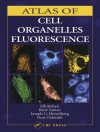Because of tremendous advancements in research, neurosurgical oncology has become increasingly complex, and it is imperative that physicians have scientific evidence to guide and defend their decision making as they strive to provide the best patient care. Controversies in Neuro-Oncology: Best Evidence Medicine for Brain Tumor Surgery, written by world-renowned experts, is a comprehensive guide that compiles, synthesizes, and summarizes the most relevant scientific literature available in neurosurgical oncology. It provides objective recommendations based on the data found in the literature, giving physicians the information they need to make fully informed treatment decisions.
Key Features:
- An opening chapter, Introduction to Best Evidence Medicine, illustrates how the authors rate the viability of the data presented
- Authors discuss in detail commonly disputed topics specific to tumor type, such as the roles of surgery and gross total resection as well as radiosurgery options
- Expert recommendation boxes highlight ‘takeaways’ for the reader
- Summary tables distill abundant scientific evidence and emphasize the main conclusions of published studies
This book will be the go-to guide for all neurosurgeons, oncologists, and neurologists involved in the multidisciplinary care of patients with brain tumors.
Mục lục
1 Introduction to Best Evidence Medicine
Section I Astrocytomas
2 The Role of Gross Total Resection in Low-Grade Gliomas
3 The Role of Surgery in the Management of High-Grade Gliomas (Newly Diagnosed, Recurrent, and Multifocal High-Grade Gliomas)
4 Adjuvants in the Surgical Resection of Astrocytomas (Intraoperative MRI and 5-ALA)
5 The Role of Intraoperative Mapping in the Resection of Low-Grade Gliomas
6 The Role of Awake Craniotomy in the Resection of Astrocytomas
7 The Role of Surgery versus Biopsy in the Management of Gliomas in the Elderly (Patients over 65)
8 The Role of Surgery in Brainstem Gliomas (Pediatric and Adult)
9 The Role of Local Drug Delivery in Management of Newly Diagnosed and Recurrent High-Grade Gliomas
10 The Role of Adjuvant Therapy in Newly Diagnosed High-Grade Astrocytomas
11 Salvage Therapy for High-Grade Gliomas
Section II Pineal Region Tumors
12 Intracranial Germ Cell Tumors—Treatment Paradigms
13 Surgery versus Initial Trial of Radiation in the Management of Pineal Region Tumors
14 The Role of Gross Total Resection in the Management of Pineal Region Tumors
Section III Intraventricular Tumors
15 The Role of Adjuvant Therapy in Subtotal Resection and High-Grade Ependymomas
16 The Role of Surgery in the Management of Asymptomatic Colloid Cysts without Hydrocephalus
17 Evidence-Based Management of Central Neurocytoma (Gross Total Resection versus Subtotal Resection and the Role of Adjunctive Therapies)
18 The Role of Surgery in Intraventricular High-Grade Astrocytomas
Section IV Hemangioblastomas
19 The Role of Surgery in von Hippel-Lindau Disease with Craniospinal Hemangioblastomas
20 The Role of Radiosurgery in the Management of Hemangioblastomas
Section V Medulloblastoma
21 The Role of Surgery in the Treatment of Children with Medulloblastoma
22 The Role of Adjuvant Therapy in Medulloblastoma with and without Neuroaxis Seeding
Section VI Metastases
23 Surgery, Radiosurgery, or Whole Brain Radiotherapy for One to Three Asymptomatic Intracranial Metastases
24 Surgery Followed by Radiosurgery Boost for Metastases
25 The Role of Surgery in Patients Presenting with Multiple Metastases
26 Stereotactic Radiosurgery (SRS) versus Whole-Brain Radiation Therapy (WBRT) in the Management of Multiple Brain Metastases
27 Evidence-Based Management of Leptomeningeal Metastasis from Solid Tumors
Section VII Extra-Axial Tumors and Skull Base Tumors
28 The Role of Radiosurgery in Newly Diagnosed Meningiomas
29 The Role of Preoperative Embolization for Meningiomas (Skull Base and Non–Skull Base)
30 Adjuvant Therapies (Chemotherapy and Radiation Therapy) for Atypical and Anaplastic Meningiomas
31 Extent of Resection and Selection of Operative Approaches in the Surgical Management of Petroclival Meningiomas
32 Need for Gross Total Resection of Cranial Base Meningiomas
Section VIII Hemangiopericytomas
33 Is There a Need for Gross Total Resection in Management of Hemangiopericytomas in the Era of Radiosurgery?
Section IX Meningeal Sarcoma
34 The Role of Surgery and Adjuvant Therapies for Meningeal Sarcoma with Brain Invasion
Section X Pituitary Tumors
35 The Role of Surgery in Nonfunctioning Pituitary Macroadenomas
36 The Role of Inferior Petrosal Sinus Sampling for Cushing Disease with Modern Dynamic Magnetic Resonance Imaging
37 The Role of Surgery for Recurrent Cushing’s Disease
38 Management of Pituitary Apoplexy (Early versus Delayed Surgery)
39 Stereotactic Radiosurgery for Functioning and Nonfunctioning Pituitary Adenomas
Section XI Craniopharyngiomas
40 Controversies in the Surgical Treatment of Craniopharyngiomas
41 Use of Radiotherapy in Optimizing Management of Craniopharyngioma
42 Intra-Cyst Therapies for Craniopharyngiomas
Section XII Cranial Base Malignancies
43 Open versus Endoscopic Resection of Midline Anterior Cranial Base Malignancy
44 The Role of Craniofacial Resection in Anterior Skull Base Malignancies
Section XIII Chordomas
45 The Role of Surgery in the Management of Skull Base Chordomas
46 Radiosurgery and Fractionated Radiotherapy Techniques for Chordomas
Section XIV Vestibular Schwannomas
47 Radiosurgery versus Surgery versus Observation in the Initial Management of Vestibular Schwannomas
48 Goals of Surgery in the Management of Vestibular Schwannomas
Section XV Glomus Jugulare Tumors
49 Surgery versus Radiosurgery for Glomus Jugulare Tumors












